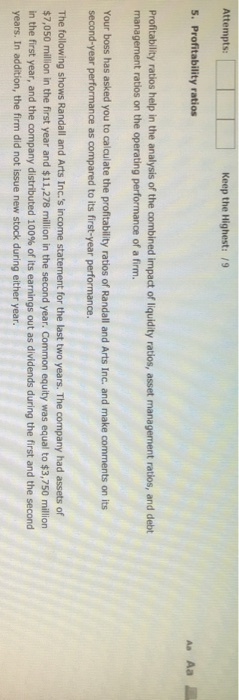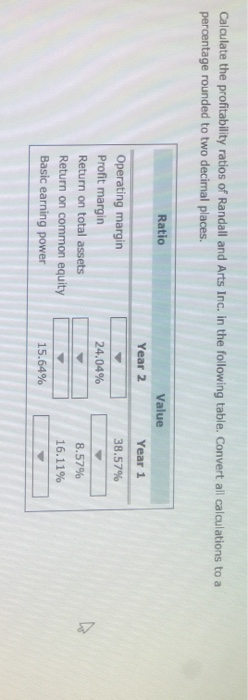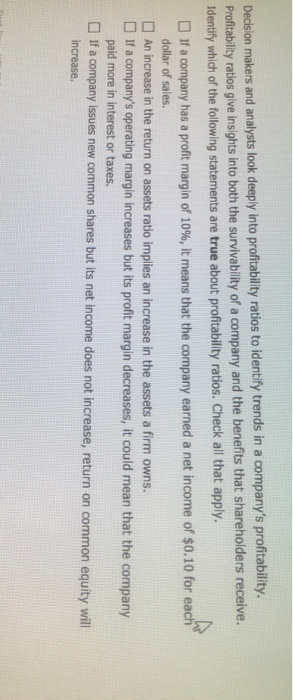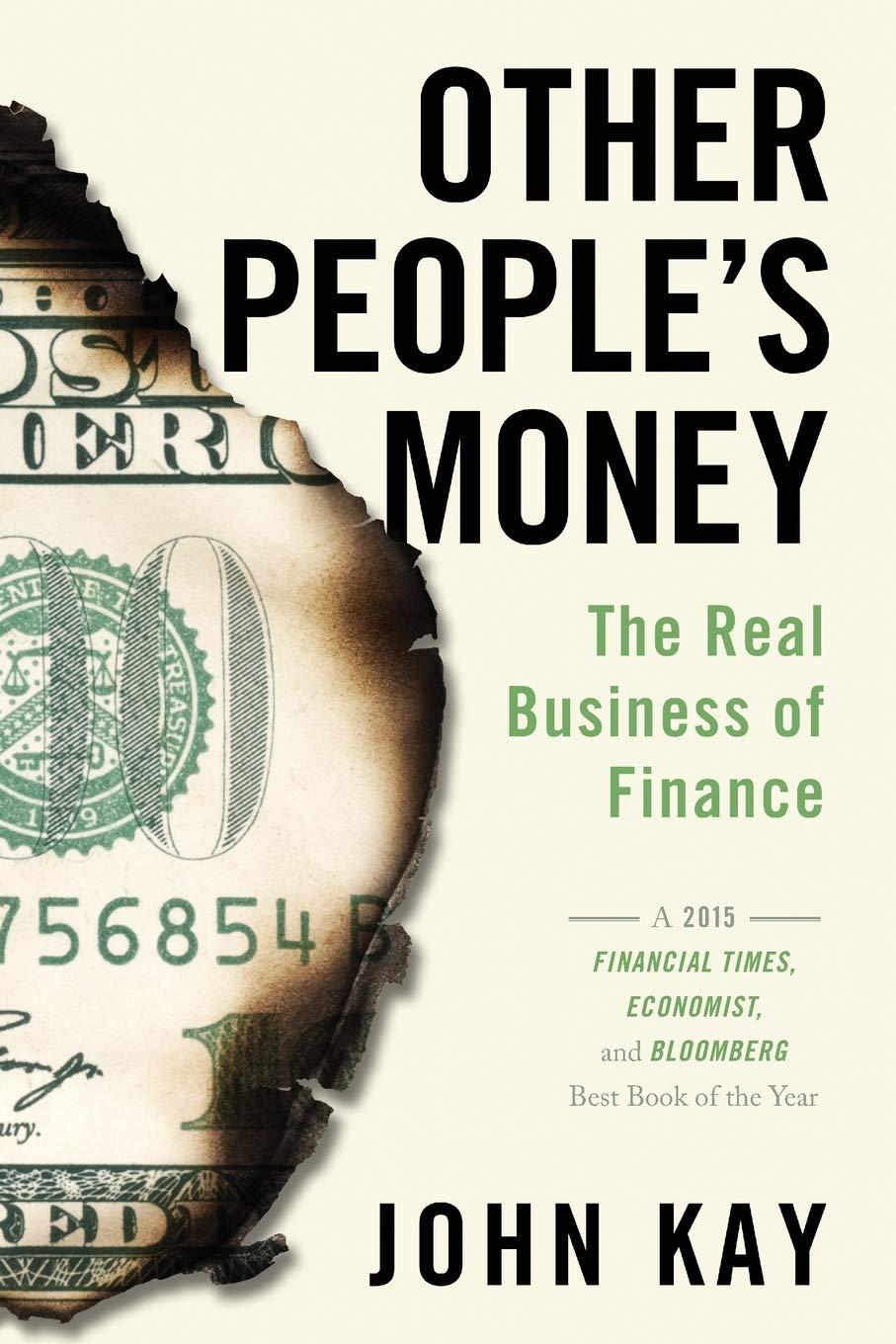Attempts: Keep the Highest: /9 5. Profitability ratios Aa Aa Profitability ratios help in the analysis of the combined impact of liquidity ratios, asset management ratios, and debt management ratios on the operating performance of a firm. Your boss has asked you to calculate the profitability ratios of Randall and Arts Inc. and make comments on its second-year performance as compared to its first-year performance. The following shows Randall and Arts Inc.'s income statement for the last two years. The company had assets of $7,050 million in the first year and $11,278 million in the second year. Common equity was equal to $3,750 million in the first year, and the company distributed 100% of its earnings out as dividends during the first and the second years. In addition, the firm did not issue new stock during either year. Randall and Arts Inc. Income Statement For the Year Ending on December 31 (Millions of dollars) Year 2 Year 1 3,810 3,000 1,855 1,723 120 1,843 1,764 1,157 150 1,526 1,007 403 604 Net Sales Operating costs except depreciation and amortization 191 2,046 Depreciation and amortization Total Operating Costs Operating Income (or EBIT) Less: Interest Earnings before taxes (EBT) Less: Taxes (40%) Net Income 238 610 916 Calculate the profitability ratios of Randall and Arts Inc. in the following table. Convert all calculations to a percentage rounded to two decimal places. Ratio Value Year 2 Year 1 38.57% 24.04% Profit margin Return on total assets Return on common equity Basic earning power 8.57% [ 16.11% 15.64% Decision makers and analysts look deeply into profitability ratios to identify trends in a company's profitability. rofiably raogie insights into both the survivablity of a company and the benefits that shareholders receive. identily which of the following statements are true about profitability ratios. Check all that apply. If a company has a profit margin of 10%, it means that the company earned a net income of $0.10 for each r dollar of sales. An increase in the return on assets ratio implies an increase in the assets a firm owns. If a company's operating margin increases but its profit margin decreases, it could mean that the company paid more in interest or taxes D If a company issues new common shares but its net income does not increase, return on common equity will increase










